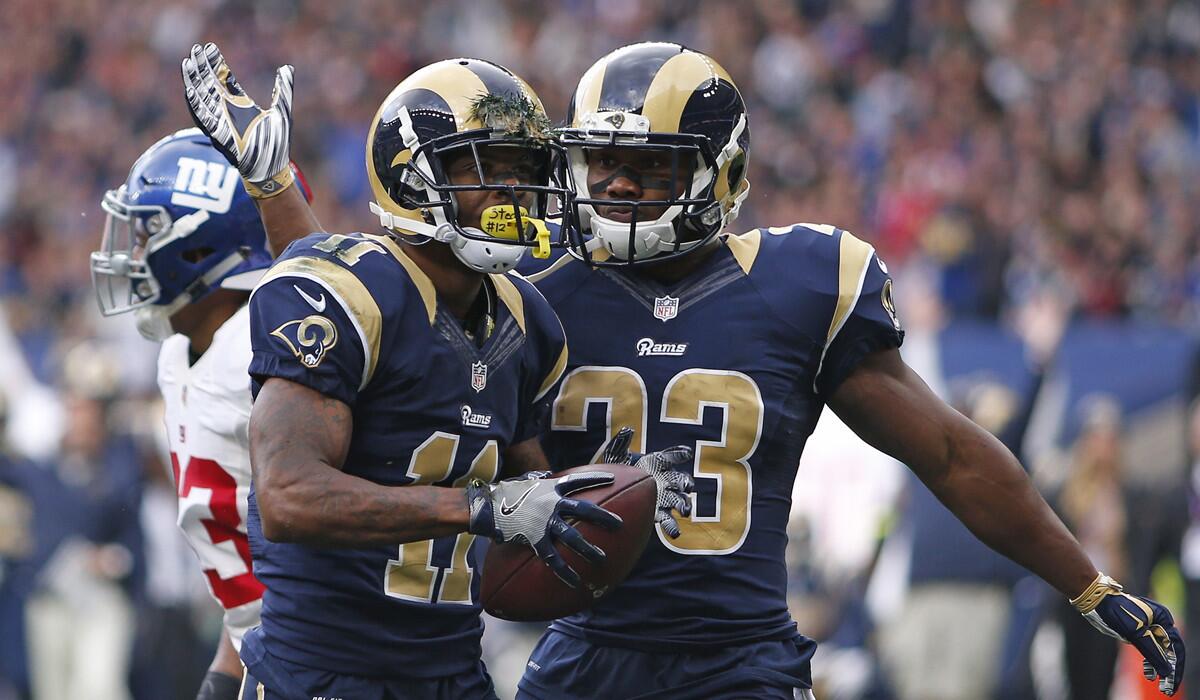Why some TV executives can’t wait for the election to end

The country will choose a new president on Nov. 8, and no one is more eager for that day than the TV executives who do business with the NFL.
Whether Hillary Clinton or Donald Trump occupy the White House won’t make a difference as to who makes it to the Super Bowl. But it will go along way to explaining whether the NFL ratings downturn this season is a temporary blip or a game-changer in the TV business.
Viewer interest in the presidential race — along with the growth of online streaming, missing star players, boring match-ups and social protests against the national anthem — has been cited as a major factor as to why the NFL is seeing its first ratings decline in four years.
The double-digit declines in audience have caused some consternation in the corporate suites at CBS, NBC, Fox and ESPN, which pay a total of around $5 billion annually for the broadcast rights to the contests. The figure has doubled in the last 10 years as the NFL has been largely immune to the audience erosion facing every other aspect of the television industry. Program choices have proliferated through online streaming, cutting heavily into traditional TV viewing, especially among younger viewers.
Election 2016 | Live coverage on Trail Guide | Sign up for the newsletter
Wall Street analysts who follow the networks’ parent companies have raised concerns about whether the decline becomes a long-term trend. Sports, especially NFL football, is the last surefire way to attract mass audiences to live TV viewing where viewers won’t fast-forward through commercials. In addition to attracting top rates from advertisers, the NFL’s massive appeal gives the networks leverage when negotiating subscriber fees from cable and satellite providers that carry their programming.
The NFL has maintained that while the numbers have slipped this year, its telecasts still dwarf everything else on TV. Through six weeks, prime time NFL telecasts averaged 16.25 million viewers compared with 6.9 million for a broadcast network prime-time show. But “Thursday Night Football” is down 18% compared with last year, while NBC’s “Sunday Night Football” is off 19% and ESPN’s “Monday Night Football” is down 24%. Sunday afternoon telecasts on Fox and CBS are experiencing single-digit declines.
The game telecasts are still reaching as many people as they did last season. Through the first four weeks of the season, 160 million viewers tuned into a game, slightly more than a year ago over that span. But the ratings decline shows fans are not sticking around as long.
The NFL and its partners may not know whether the game’s popularity has truly peaked until after election day. Through the first half of the season, the historic presidential campaign between Trump and Clinton has provided stiff competition for viewers’ attention.
“The No. 1 reason people are not spending as much time watching is the unique election cycle we’re in,” said Mike Mulvihill, executive vice president of research, league operations and strategy for Fox Sports.
Trump and Clinton have been a ratings juggernaut for cable news and the presidential debates, and there are data that support the rationale that the compelling reality show-like story of the campaign its cutting into the time fans watch the NFL.
Through the first six weeks of the football season, Sunday viewing of cable news channels CNN, MSNBC and Fox News is up 79% compared with 2015 in the 1:30 p.m. to 7 p.m. hours when NFL games air. The increase among men ages 25 to 54, a target audience for NFL games, is 120%.
The cable news networks have also seen their ratings surge in prime time, and some games have gone up against the presidential debates. The first presidential face-off between Trump and Clinton on Sept. 26 was watched by a record 84.4 million viewers, slicing into ESPN’s “Monday Night Football. The second debate on Oct. 9, which drew 66.5 million, cut into the audience for NBC’s “Sunday Night Football” telecast on that night.
There is historical precedent for presidential politics pulling viewers away from the NFL. The last year the NFL’s ratings dropped was in 2012, when President Obama ran for reelection against Mitt Romney. NFL ratings were also down in every presidential campaign cycle before that going back to at least 1996.
But none of those previous declines was as large as the one experienced so far this year, indicating politics isn’t the only reason. The prime-time games have been down from last year even in weeks in which there has not been debate competition. At a recent meeting of NFL owners, league commissioner Roger Goodell noted that the impact of shifting consumer habits on the league’s TV ratings needed to be studied.
To reach younger audiences, the NFL in April selected Twitter as the streaming platform for Thursday night football games.
TV ratings do not include online viewership. But the networks say they are seeing no evidence that online streaming — typically drawing several hundred thousand viewers for a game — is siphoning off much of the TV audience. The prevailing view is that fans watching on computers or mobile devices are doing so because they can’t be in front of a big screen.
Ugly play on the field has been cited as a reason for the decline. But that’s in the eye of the beholder. The NFL’s data show that through the first six weeks of the season, penalties are actually down slightly from last season, with an average of 16.57 per game. The average length of a game is also about the same as last year at 3 hours and 7 minutes.
The strongest play-related reason for the ratings decline likely has to do with who has not been on the field. The NFL season opened without three of its biggest star quarterbacks because of the suspension of Tom Brady of the New England Patriots, the sidelining of injured Dallas Cowboys starter Tony Romo and Peyton Manning’s retirement.
“The absence of some of those personalities has to be a factor,” Mulvihill said.
Mulvihill noted that the regional telecasts where fans tune in to watch their local teams have not seen nearly the same declines as national contests that depend on big-name stars to draw casual viewers.
“We’re finding that people are still making time for their local team,” he said. “The impact has really been felt on the non-local game.”
Some analysts and sportswriters have suggested that the league is being subjected to a fan backlash against San Francisco 49ers quarterback Colin Kaepernick’s decision to take a knee during the playing of the national anthem before games to protest police shootings of African Americans. Pivotal Research Group analyst Brian Wieser noted that the NFL’s audience decline has been more pronounced among white, lower-income, blue-collar households outside of urban areas — a group that is likely less sympathetic to Kaepernick’s message.
But Mulvihill said his network, which carries the 49ers games as part of the National Football Conference package, has seen no evidence in the Nielsen data that shows any impact from Kaepernick’s actions. Fox’s Sunday afternoon games have averaged 19 million viewers, down just 1% compared with last year.
“A boycott would manifest in a way we could see in the ratings,” he said.
TV consultant Lee Berke of LHB Sports believes the NFL’s ratings will improve in the second half of the season when NBC is able to exercise its right to pick the most desirable match-ups for “Sunday Night Football.”
“People tune in for the story lines when the top teams are playing,” he said.
A network executive who spoke on the condition of anonymity agreed that there is likely to be a football ratings rebound after the election, but noted that even the durability of the NFL has its limits as the public’s habits are being radically altered by Netflix, Amazon and other new players vying for viewers’ attention.
“This is the league that defied gravity,” the executive said. “At some point you just hit the ceiling.”
See the most-read stories in Entertainment this hour »
Twitter: @SteveBattaglio
ALSO
Comcast signs up more cable TV subscribers, bucking the cord-cutting trend
Sumner Redstone says ex-girlfriends made off with $150 million, leaving him ‘in debt’
If AT&T swallows Time Warner, who might be gobbled up next?
Disney may try to get even bigger to compete with merged AT&T-Time Warner
‘A practical solution to a horrific problem’: When even Los Angeles needed havens for black drivers
More to Read
From the Oscars to the Emmys.
Get the Envelope newsletter for exclusive awards season coverage, behind-the-scenes stories from the Envelope podcast and columnist Glenn Whipp’s must-read analysis.
You may occasionally receive promotional content from the Los Angeles Times.







